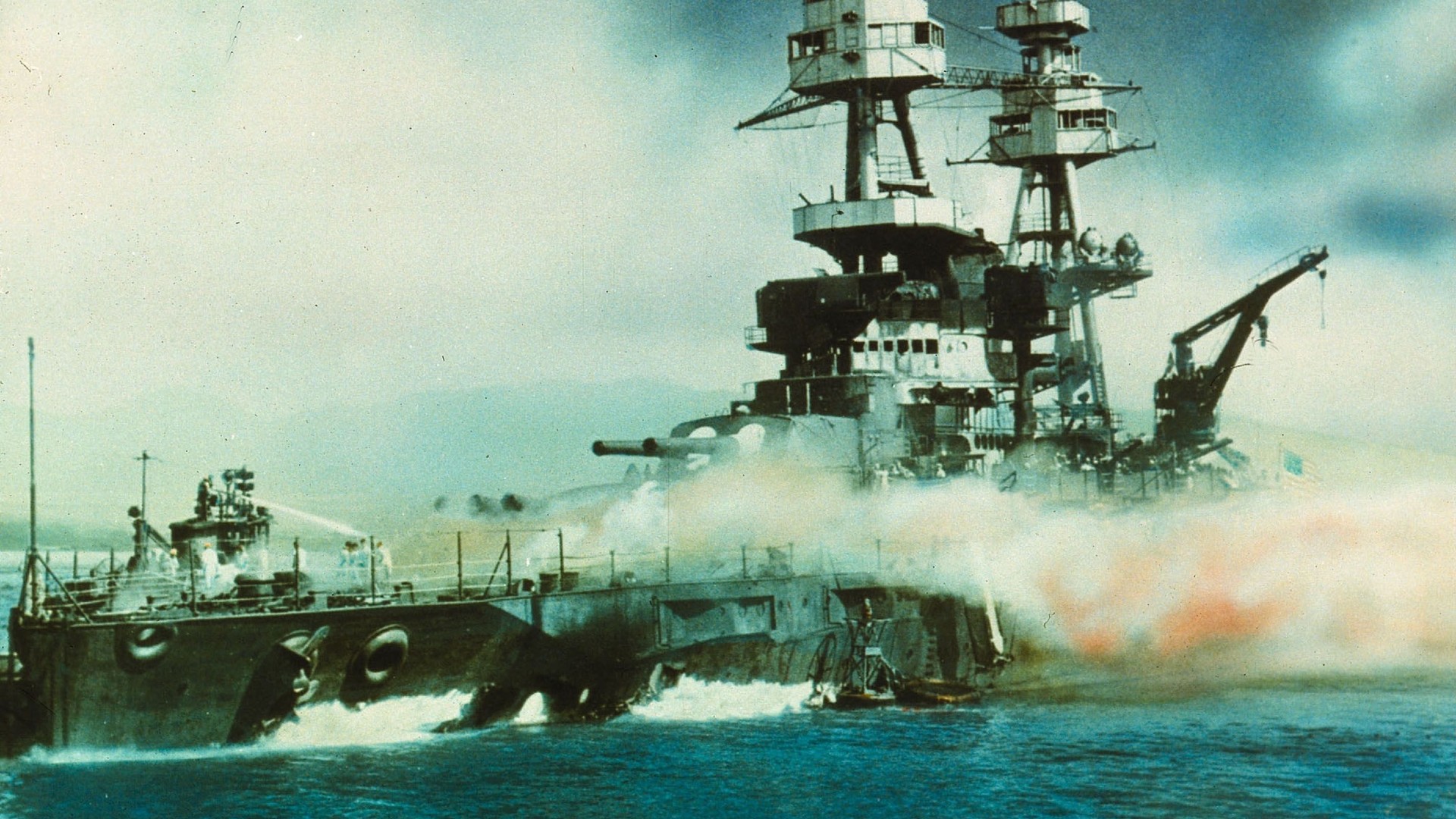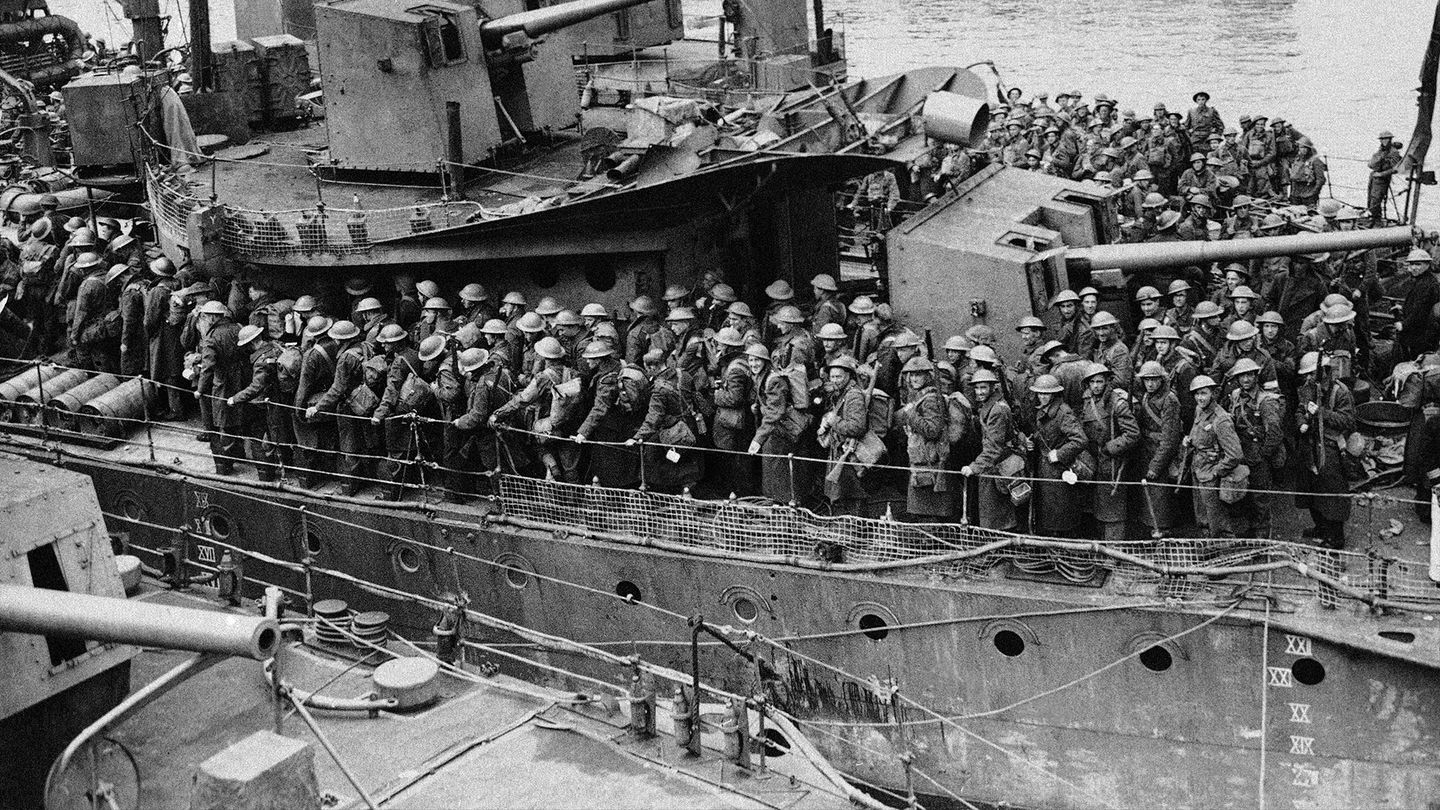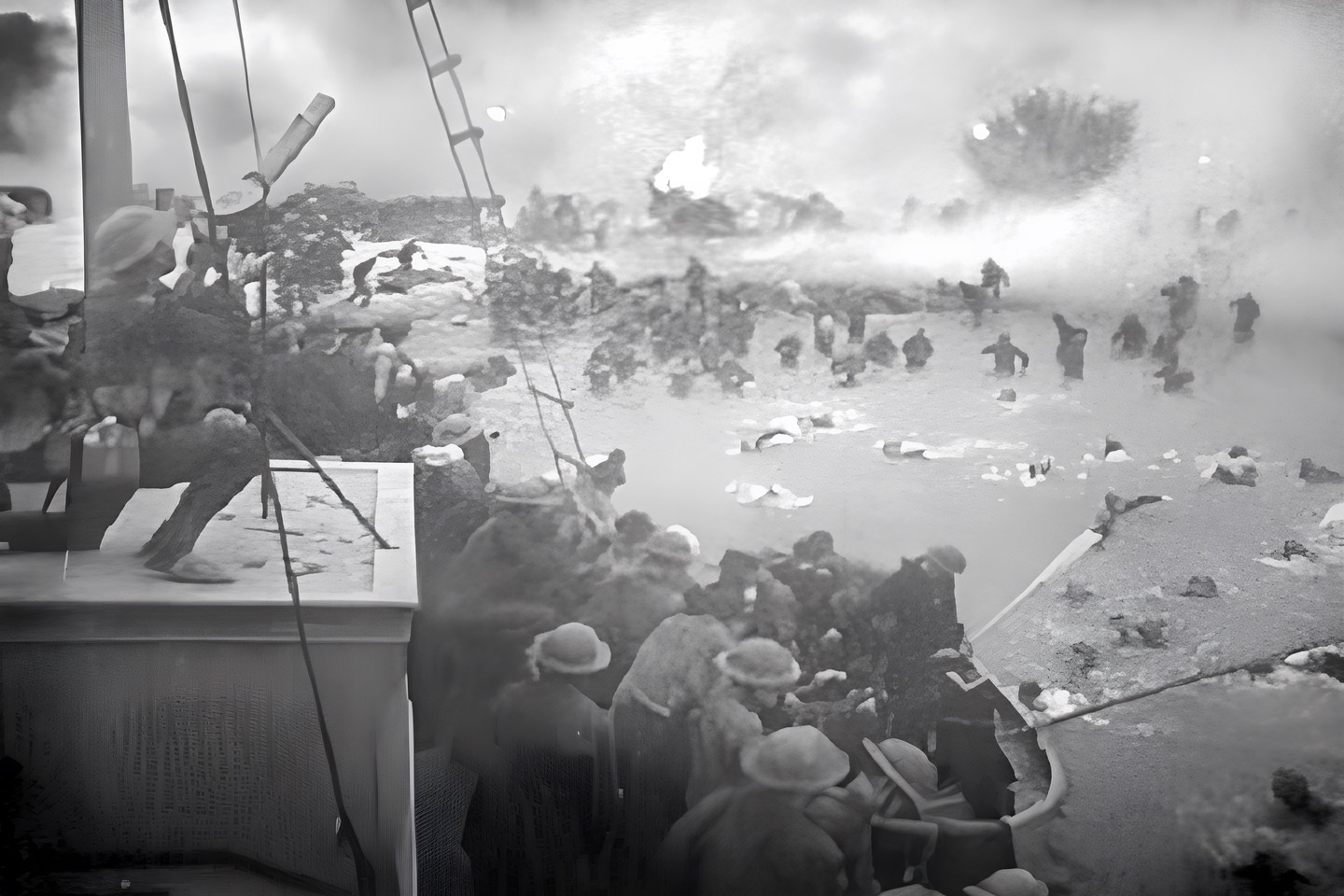Operation Overlord began on June 6, 1944, with the Normandy landings. It represents one of the decisive battles of World War II in Europe and is also known as the Battle of Normandy. After several months of organization in London, the Allies launched an offensive aimed at liberating France, which had been occupied by the Germans since 1940.
- Why Was Operation Overlord Implemented?
- What Were the Objectives of Operation Overlord in 1944?
- Where and When Did Operation Overlord Take Place?
- Who Directed D-Day and the Battle of Normandy?
- How Did the Battle of Normandy Unfold?
- How Were the Logistics of Operation Overlord Organized?
- How Many Deaths Were there During Operation Overlord?
- What Were the Consequences of the Battle of Normandy?
The operation began with the parachuting of the first combatants into the French hinterland, followed by the maritime landing of liberation forces on the beaches of Normandy, particularly on the coasts of Calvados and Cotentin. Operation Overlord ended more than two and a half months later, around August 30, 1944, by which time the territories between the Loire and the Seine had been reconquered. It allowed for the liberation of Paris on August 25, as well as that of Le Havre two weeks later. This operation ultimately led to the defeat of Nazi Germany, caught in a pincer movement by the USSR in the east and the Americans in the west.
Why Was Operation Overlord Implemented?
World War II began in 1939. On June 4, 1940, the Germans took possession of Paris, and France was occupied, forced to sign an armistice with Adolf Hitler. Since 1941 and the breaking of the German-Soviet pact, Germany had been weakened by the Eastern Front. It lost the support of its Italian ally at the end of 1943 after the Allied invasion of Italy. Stalin called on British, Canadian, and American forces to catch the Axis in a pincer movement by creating a third front from the west. With the Atlantic Wall weakened by German indecision, the Americans proposed to the Allies to land in France in 1944 to create a new opening in Europe and work towards the liberation of the country. The operation was named “Overlord,” which means “suzerain,” a term chosen to show the importance of this operation for the Allies.
What Were the Objectives of Operation Overlord in 1944?
The main objective of Operation Overlord was to create a new combat front by breaking through the German defenses in the west. The plan was to penetrate the Atlantic Wall and force the Germans to retreat. It was necessary to seize a port like Cherbourg and a larger territory to create a bridgehead. The goal was to facilitate the movement of the Allies and to hold Germany in a vice between the Eastern and Western fronts.
The operation aimed to liberate northwestern France, starting with Normandy and then Brittany, to facilitate the transport and installation of Allied forces. This operation was part of a larger reconquest movement, with the landing in Provence and also Operation Bagration led by the Soviets in the east to push back the German forces installed in Poland and Eastern European countries.
Where and When Did Operation Overlord Take Place?
Operation Overlord began on the night of June 5-6, 1944, in Normandy. D-Day is the English name given to this day when airborne divisions were parachuted behind the Atlantic Wall to sow disorder in the German lines and force them to fight on two fronts. Operation Neptune, originally scheduled for June 5 and postponed due to bad weather, allowed for the landing of Allied troops on the beaches of Normandy. It concentrated its action on the coasts of Calvados and Cotentin.
American troops landed at Utah Beach and Omaha Beach, while Canadian troops landed at Gold Beach, Juno Beach, and Sword Beach. The objective was to break the Atlantic Wall; the German coastal fortifications were finally dismantled, and the troops continued their progression until August 30, 1944.
By this date, the territories between the Loire and the Seine were conquered, with a few exceptions.
Who Directed D-Day and the Battle of Normandy?
D-Day (the landing) and the Battle of Normandy were directed by various Allied generals and leaders.
The British forces followed Churchill’s orders, with command delegated to Marshal Bernard Montgomery. The British were in charge of parachuting into Norman lands. On the American side, President Franklin D. Roosevelt delegated the beach landing operation to General Dwight Eisenhower and his deputies George S. Patton and Omar Bradley. Although the organization of these operations was overseen by the Americans and British, other countries took part in the Battle of Normandy, notably the Canadians and the Free French Forces (FFL) under General de Gaulle.
How Did the Battle of Normandy Unfold?
The Normandy landings followed Operation Fortitude, during which the Allies launched false information to make the Germans believe that the landing would take place in Nord-Pas-de-Calais. D-Day began on the night of June 5-6 with the parachuting of several airborne divisions around Norman villages to surprise and disperse the attention of the Germans, whose weak contingents were concentrated along the Norman coasts.
Even though the divisions were severely weakened by aerial bombardments and ground resistance, the paratroopers distinguished themselves in various battles, such as at Cotentin-Cherbourg, which allowed for the liberation of Cherbourg on July 1. On June 6, the Normandy landings were launched, and nearly 150,000 Allied soldiers poured onto the Norman coasts in one day. They distinguished themselves in the Battle of Caen. On June 13, they continued the liberation of Norman territory with the Battle of the Hedgerows.
Gradually, the Allies regained ground until July with Operation Cobra, which aimed to organize a breakthrough at Avranches. Once German resistance was annihilated, a crossing of the Seine was established after the victory of the Falaise Pocket. The liberation of Paris took place on August 25, 1944, and that of Rouen on August 30, the final step that closed the Battle of Normandy. In detail, numerous battles took place simultaneously:
How Were the Logistics of Operation Overlord Organized?
Operation Overlord required particularly advanced logistics to ensure its success. First, an efficient strategy was needed to allow a large number of men, namely several hundred thousand soldiers, to cross the English Channel. This required building tens of thousands of ships, resulting in a particularly high material cost. This problem could only be solved by the contribution of raw materials and human resources from all Allied countries. Subsequently, it was necessary to ensure the continuous delivery of thousands of soldiers as well as heavy military equipment, vehicles, and materials for several weeks. Indeed, the German counterattack following the landing required a continuous influx of soldiers and vehicles to resist enemy offensives and organize the breakthrough. To address this, the Allies established artificial ports such as Mulberry Harbor (Arromanches), while the fighters recaptured the port city of Cherbourg. It was also necessary to ensure the supply of fuel to power the approximately 20,000 deployed vehicles. The Allies had to transport nearly 15,000 tons of gasoline, initially dropped by air and introduced through artificial ports, and later shipped through the recaptured port of Cherbourg.
How Many Deaths Were there During Operation Overlord?
The Battle of Normandy resulted in nearly 130,000 deaths on both sides during Operation Overlord, including civilian casualties. Estimates suggest around 50,000 soldiers were killed on each side and 30,000 civilians lost their lives. The number of wounded in combat is estimated at about 160,000 among the Allies. Many soldiers were disfigured, maimed, and disabled for life.
Similarly, Normandy was ravaged by bombings and clashes, with many buildings destroyed and villagesrazed.
What Were the Consequences of the Battle of Normandy?
The Battle of Normandy significantly weakened German forces. It allowed for the liberation of the Northwest, from Le Havre to Nantes, passing through Paris. In parallel, the Germans entrenched themselves in Brest, Lorient, Saint-Nazaire, and La Rochelle. While other Allied contingents landed in Provence and ensured the liberation of Southern France without significant German opposition. Nevertheless, from September 1944 to March 1945, the Lorraine Campaign took place, opposing the Americans and French to the Germans.
Well-established Allied troops could organize the offensive in Europe from the west. Other German pockets were created in Colmar or Dunkirk, but the Allies had to advance eastward. Paris was liberated in barely three months. Pushed back towards Berlin, the Axis forces would soon be neutralized, cornered in the west by the Americans and in the east by the Soviets. The war was coming to an end in Europe.






